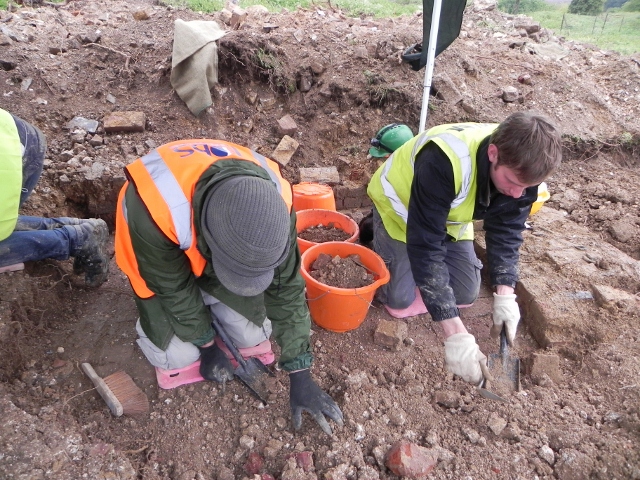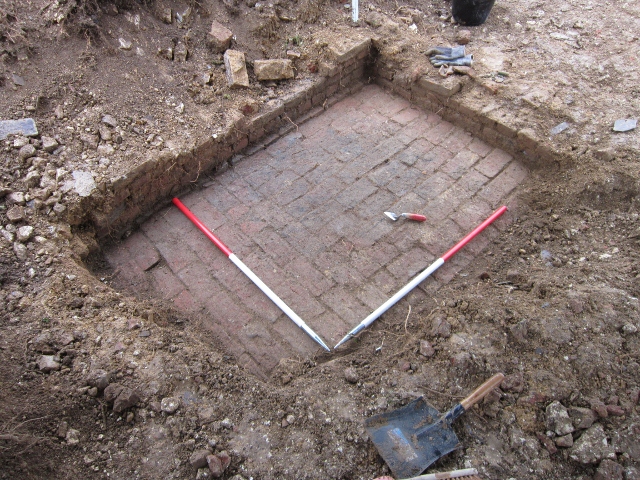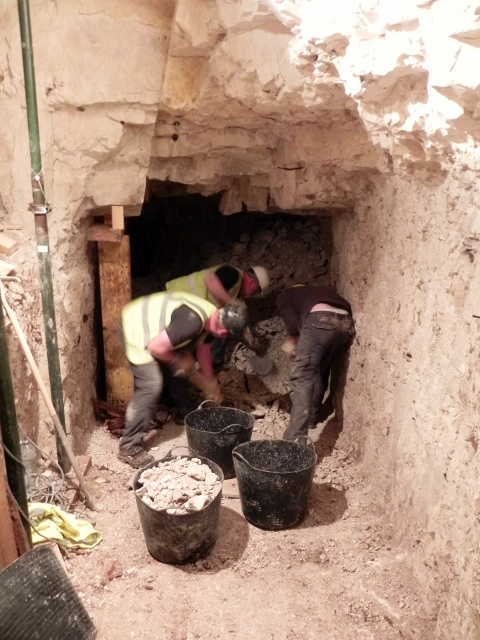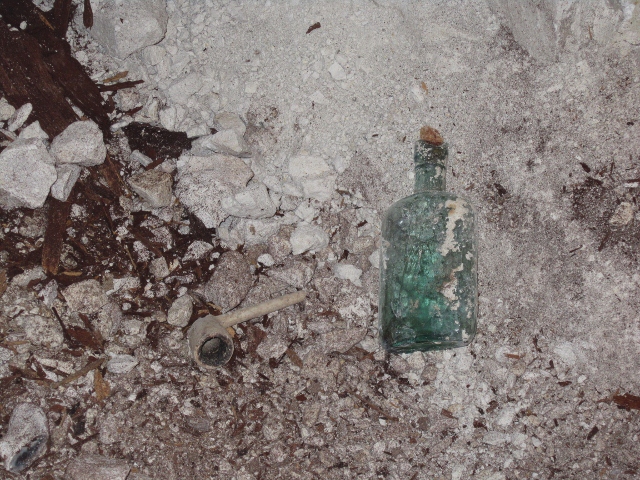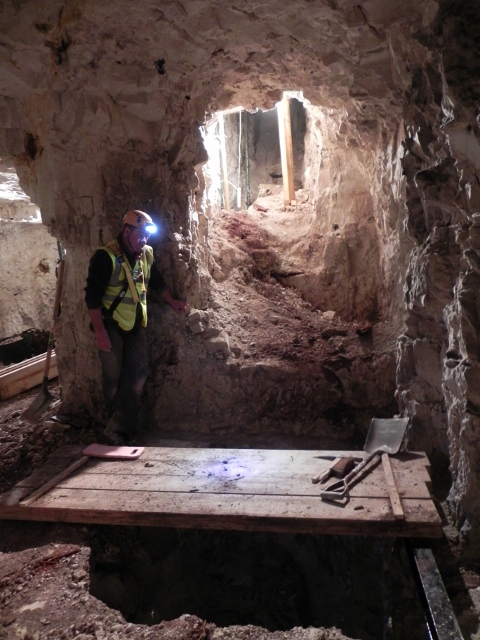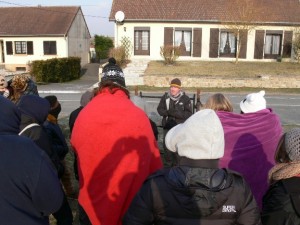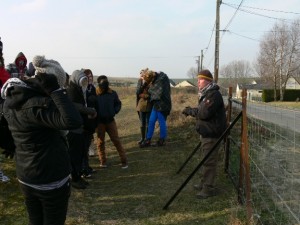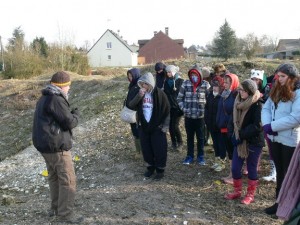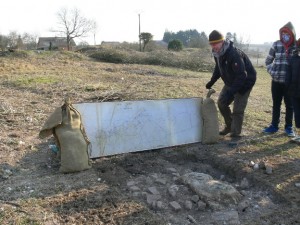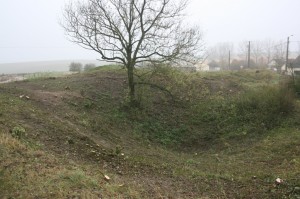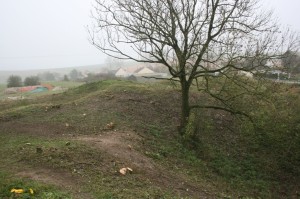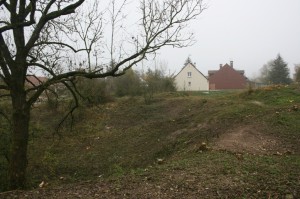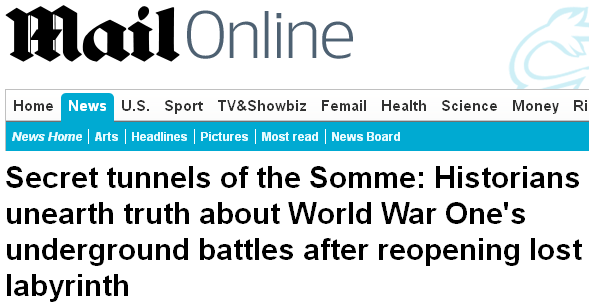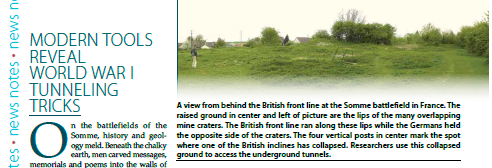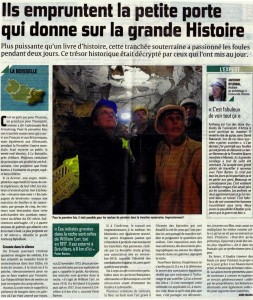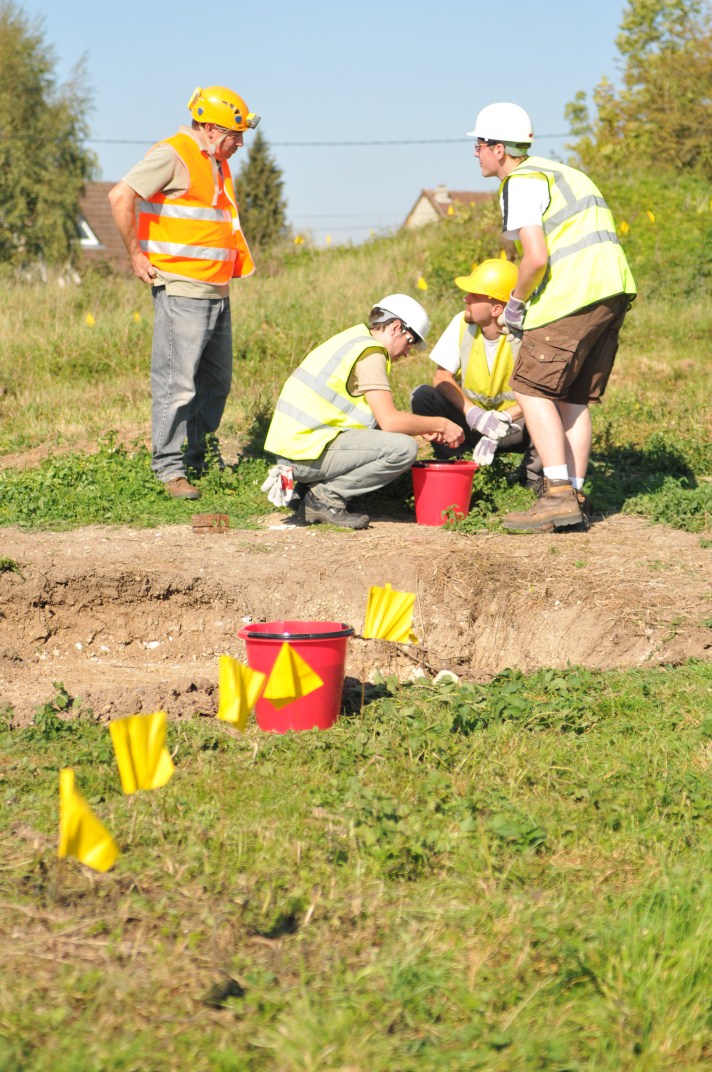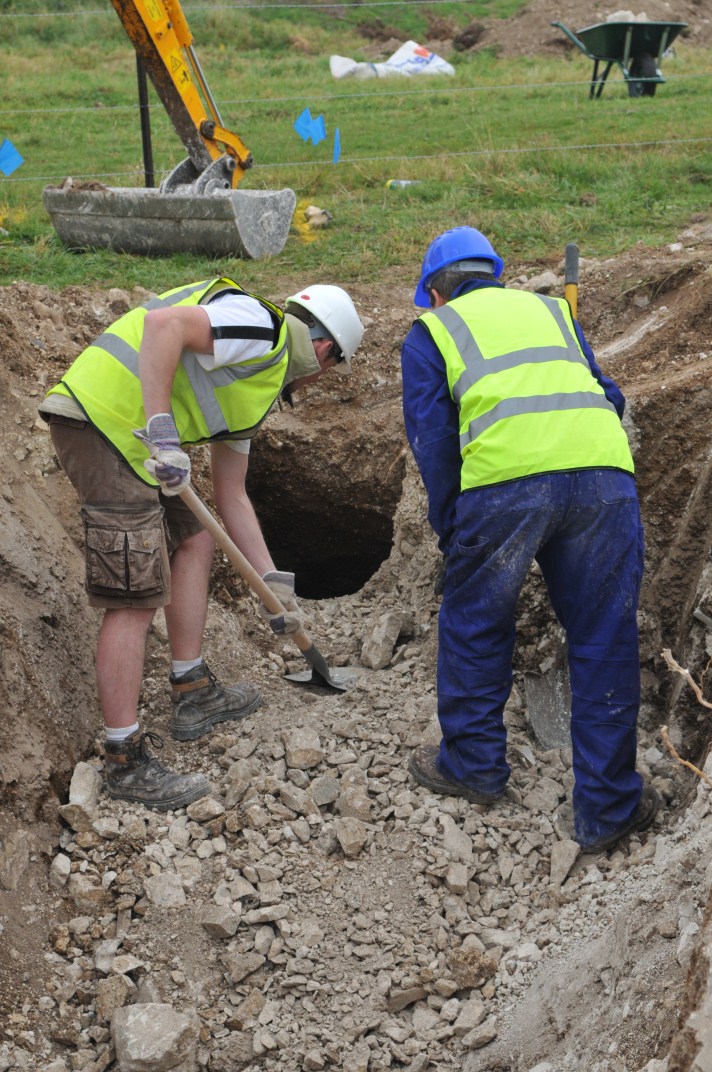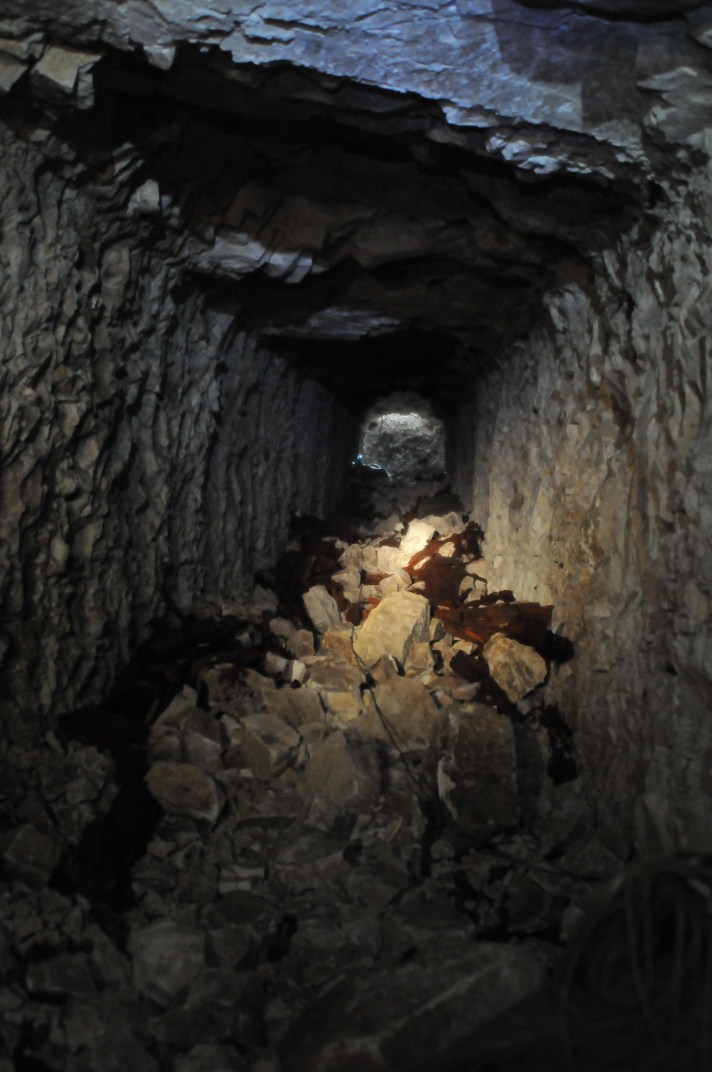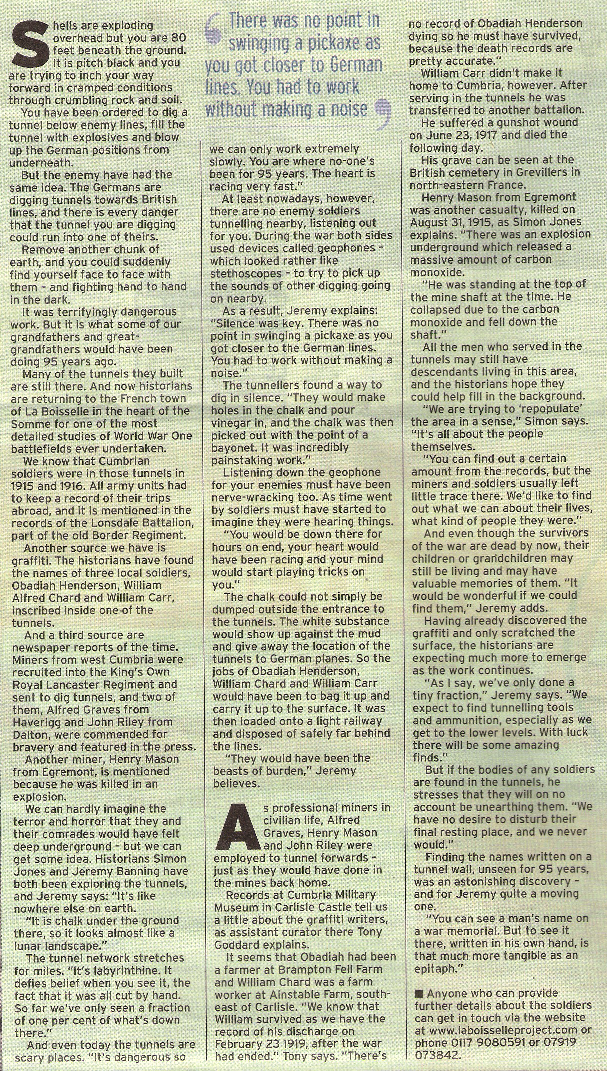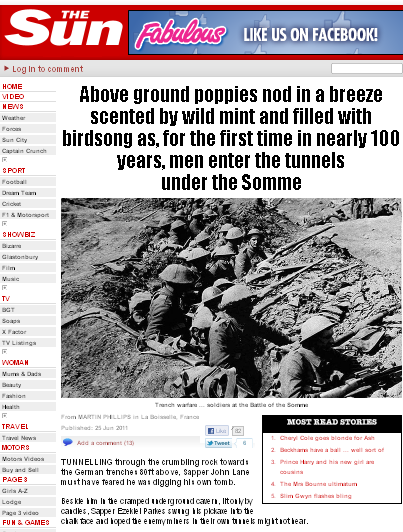In mid-November 2013, archaeology by the La Boisselle Study Group (LBSG) restarted on First World War trenches at La Boisselle, Somme. The work concentrated upon features that once lay within the courtyard of a large farm, a position known by the French forces as the ‘Il├┤t’, and by the Germans as the ŌĆśGranathofŌĆÖ.
In July 2013, during the excavation of a pre-Christmas 1914 German trench located within the last surviving corner of the farm courtyard (the rest is now a mine crater-field), and an associated early 1915 communication trench dug by French troops, LBSG archaeologists uncovered the remains of a British soldier. Investigations revealed the presence of further human remains.
Following discussions with the British Ministry of Defence, the Commonwealth War Graves Commission (CWGC), the Direction R├®gionale des Affaires Culturelles (DRAC) and the Office Nationale des Anciens Combattants et Victimes (ONAC), and after an intensive fund-raising campaign, archaeological investigation recommenced at La Boisselle on 15 November 2013. The international LBSG team of volunteers comprised historians, archaeologists, genealogists, geophysicists, anthropologists, surveyors and conservators.
A specially-designed shelter was constructed over the proposed work area. It comprised artefact processing, cleaning, and conservation areas with photographic station, and an anthropology section. During the subsequent highly complex work amongst the debris of the farm stables, a second British soldier was found; nearby, the remains of seven French and German soldiers were also discovered.
When the project terminated on 8 December, the French and German remains had been deposited with the ONAC in Bray-sur-Somme. The Commonwealth War Graves Commission, acting on behalf of the Ministry of Defence in the UK, is holding both sets of British remains at its morgue in Beaurains, and the MoD are continuing their work to identify the casualties.
Pending decisions about the future of the Glory Hole site to be taken later this month by the newly-formed Association des Amis de lŌĆÖIlot de La Boisselle, the site has been backfilled to protect the archaeology.
La Boisselle Study Group, 8 January 2014




